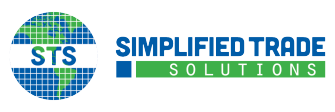To most people a used vehicle is an older car, something that’s been driven around a bit, has a scratch or two from the perils of grocery store parking lots, and smells like a lingering combination of air fresheners and fast food — long gone is the pristine new car smell.
Well, yes, AES too considers that a used vehicle. However, it also says that any passenger motor vehicle not purchased directly from the manufacturer is “used.” From U.S. Customs and Border Protection “‘used’ refers to any self-propelled vehicle the equitable or legal title to which has been transferred by a manufacturer, distributor, or dealer to an ultimate purchaser.”
Furthermore, many other contraptions are “used vehicles” according to AES. In fact there are 165 Schedule B/HTS classifications labeled as used vehicles when filing in AES, although only 17 of these have “used” explicitly stated in their product descriptions.
Besides passenger motor vehicles not direct from the manufacturer, these machines fall in AES’ used vehicle category even if they are fresh off the assembly line.
- Snowmobiles
- Golf carts
- Ambulances
- Hearses
- Motor homes
- Motorcycles
- Tractors for semi-trailers
- Track-laying tractors
- Log skidders
- Agricultural tractors
- Dump trucks
- Tracked vehicles
- Mobile cranes and derricks
- Concrete mixers
- Fork-lifts
- Bulldozers
- Road rollers
- Shovel-loaders
- Pile-drivers
- Snowplows
- Self-propelled rock cutters
- Balers
- Threshers
- Harvesters
- Riding lawn mowers
The product classification numbers for these and all 165 used vehicles are in the Automated Export System Trade Interface Requirements, Appendix U.
When filing these in AES, extra information is required to include the product ID or serial number, plus the title and title state, if applicable.
More importantly, the export information must be filed, and an ITN obtained, 72 hours before reaching the border per the more stringent requirements for used vehicles. The same applies to those destined to Canada, a situation where most non-used vehicle exports are exempt from filing.
So just put up a new pine tree air freshener, file in AES three days in advance, and that golf cart is ready for export.
